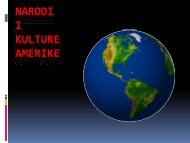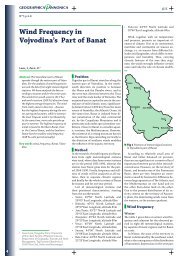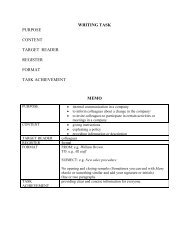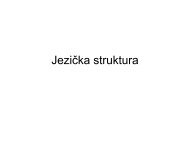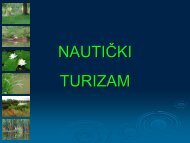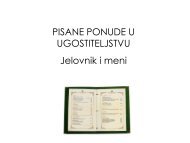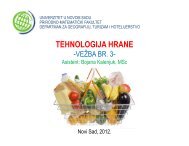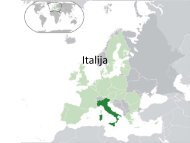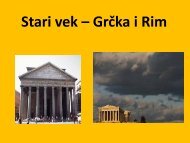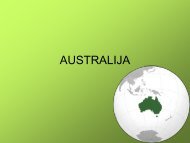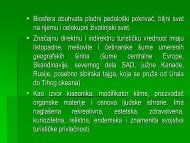Petrovaradin Fortress (Novi Sad, Serbia): Tourism Spatial Planning ...
Petrovaradin Fortress (Novi Sad, Serbia): Tourism Spatial Planning ...
Petrovaradin Fortress (Novi Sad, Serbia): Tourism Spatial Planning ...
Create successful ePaper yourself
Turn your PDF publications into a flip-book with our unique Google optimized e-Paper software.
Field research<br />
Field research is an inevitable one, especially when the object of the research is area and<br />
objects such as <strong>Petrovaradin</strong> <strong>Fortress</strong> because this is the only way that enables the insight<br />
into the actual situation. It is actually the observation technique that provided essential data<br />
on the existing condition of space management in the function of tourism, purpose of space<br />
and condition of buildings and objects that belong to the Upper Town of <strong>Petrovaradin</strong> <strong>Fortress</strong>.<br />
These are especially important data because they represented the base for comparative<br />
analysis of the situation in the Upper Town of <strong>Petrovaradin</strong> <strong>Fortress</strong> immediately after<br />
the construction and condition that it is found today. As one of techniques of field research<br />
we also conducted the interview (Perović, 2008). The interview technique gave us data<br />
about: the Upper Town as a tourist symbol; possibilities for development; condition of tourist<br />
organization and quality of tourist product; management style. Different structures of<br />
people were interviewed: citizens, managers, employees and trusts (Kruja, Hasaj, 2010).<br />
Observation and interview as techniques of field research were conducted during April and<br />
May 2008 on the area of the Upper Town of <strong>Petrovaradin</strong> <strong>Fortress</strong>. Interview was conducted<br />
with employees in the City Museum, <strong>Novi</strong> <strong>Sad</strong> Archive, hotel “Leopold” and three restaurants.<br />
When management is concerned, we reached contact with the representatives of<br />
Cultural heritage preservation Institute of <strong>Novi</strong> <strong>Sad</strong>, Public Enterprise “Zelenilo” and Public<br />
Enterprise “Poslovni prostor”. 38 people were interviewed: 10 employees, 3 managers, 10<br />
citizens and 15 tourists.<br />
Research Results<br />
This part presents results that were gathered after both an indoor and field research. There<br />
are data presented about (1) present condition of the Upper Town and (2) interview results.<br />
Present condition of the Upper Town<br />
In the last couple of years, the Upper Town of <strong>Petrovaradin</strong> <strong>Fortress</strong> was thoroughly invested<br />
into and reconstructed, which is mainly the result of the private capital input. Objects that<br />
belonged to hotel “Varadin” which was part of the Long Barracks are under a long concession<br />
and that is the reason why the inner and outer parts of this object were restored under<br />
the conditions of Cultural Heritage Preservation Institute of <strong>Novi</strong> <strong>Sad</strong>. The same happened<br />
to the Officer’s Pavilion where there are now three restaurants. New lighting system and<br />
walking paths were constructed. However, there are no other accompanying objects such as<br />
fountains, public toilet facilities, garbage cans or an adequate urban mobiliar. It should also<br />
be mentioned that parts of the Long Barracks that do not belong to hotel “Leopold” have not<br />
been reconstructed at the same level of quality as the hotel itself, which can be seen at the<br />
first sight.<br />
Interview results<br />
Interview showed quite large differences between the answers of different structures of interviewees.<br />
All of them agree that <strong>Petrovaradin</strong> <strong>Fortress</strong> is the greatest tourist symbol of <strong>Novi</strong><br />
<strong>Sad</strong>. The same positive answer was given to the question about the possibilities of further development.<br />
Questions about the organization of area and quality of tourist product divided the<br />
72 TURIZAM | Volume 15, Issue 2, 65-76 (2011)



